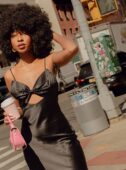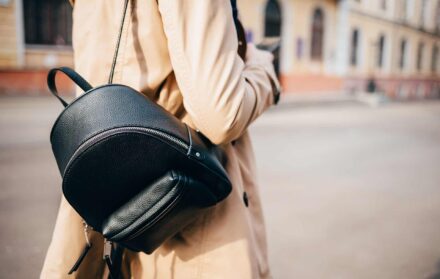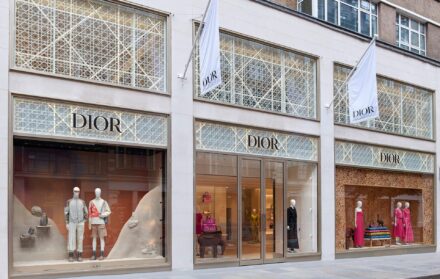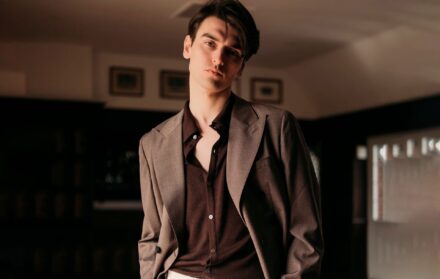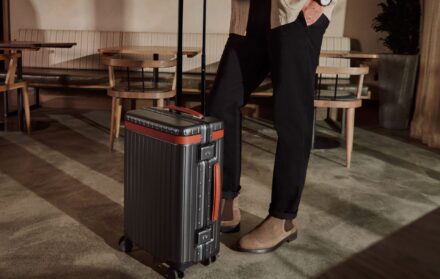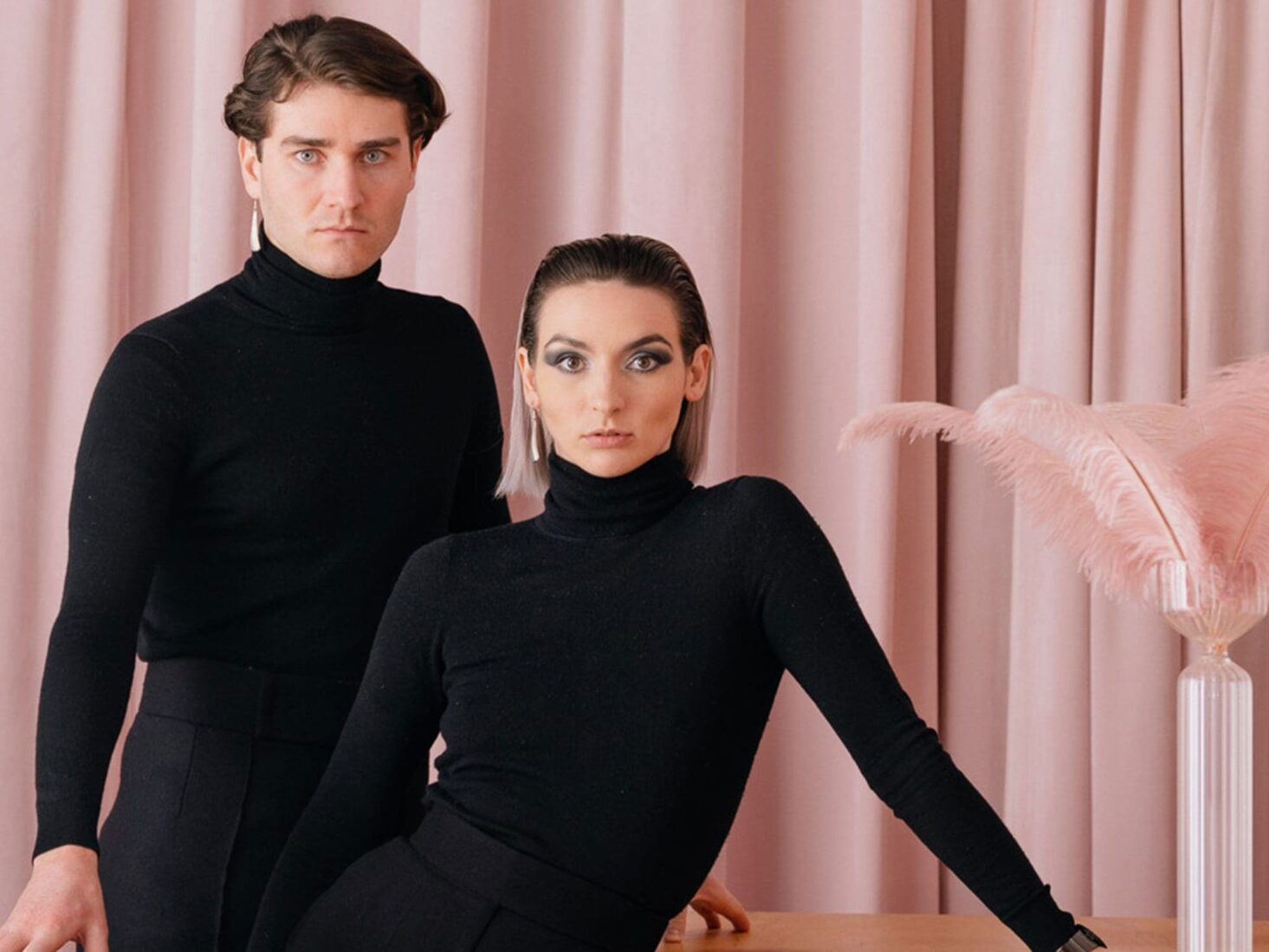
New kids on the block: Meet Dobrik & Lawton – the tailors shaking up Savile Row
The newest names on the Row are on a mission to bring modern appeal to time-honoured tailoring
“I find it sad that there are still people who feel like this street doesn’t belong to them,” says Joshua Dobrik, neatly summing up the ethos of Dobrik & Lawton, the bespoke tailoring business he forms one half of, alongside business partner Kimberley Lawton.
The pair has recently popped up in a sumptuous space at 31 Savile Row. Don’t, however, arrive expecting polished mahogany and reams of tweed because Dobrik & Lawton are on a mission to do things differently. From the sparse store decked out in acres of pink velvet to their desire to make the Row a more welcoming destination for women and the trans community, Dobrik & Lawton is not your grandfather’s tailor.
With stints at Huntsman, Edward Sexton and McQueen under their belts, sure they can whipp you up a fine navy suit. But, with so much more on offer, to request one would be to miss the point. Meet the Row’s newest, most ambitious incumbents.
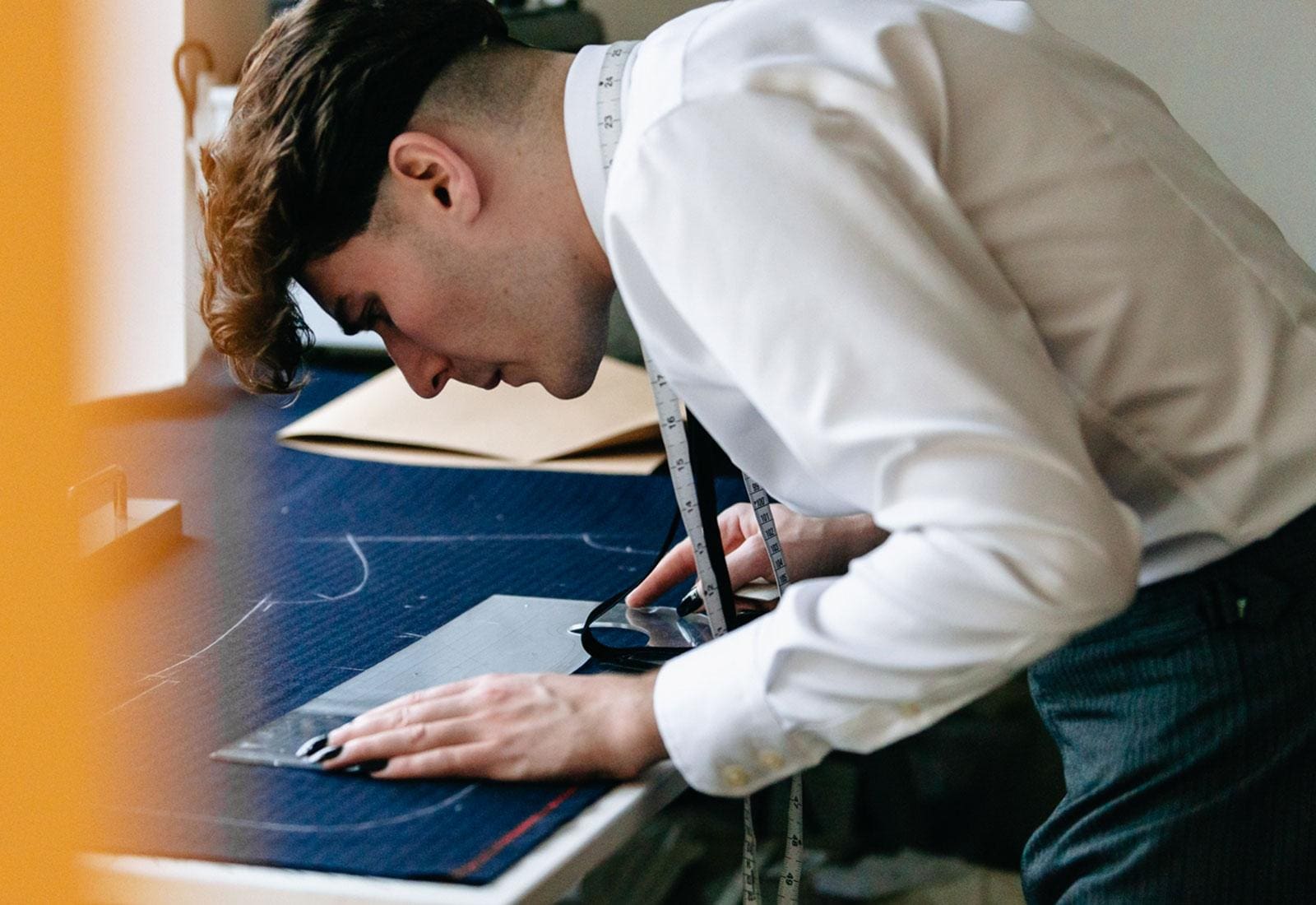
What were your early experiences on the Row like?
KL: Savile Row hasn’t always been very inviting. When I tried to get into tailoring, a guy at one of the tailors told me, “Don’t bother, you’ll never break into tailoring because no one wants a woman.” Joshua has had quite a bit of homophobia as well so it’s been tough. Having our own business means we don’t have to contend with any of that.
That goes some way to answering why you decided to go out on your own. Was there any other impetus?
KL: We wanted to do fun things. There’s a huge place for navy and grey suits and classic tailoring – most business people need a grey suit to go about their days. But, for us, it didn’t really stimulate our creativity. So as much as we like making them, and they’re definitely our bread and butter, we wanted to push the boundaries. We want to wear 34-inch flares and gold button fronts on our trousers and just be us.
I come from a fashion background, having studied at London College of Fashion, and, I was always a huge admirer of Claude Montana and Thierry Mugler. We felt our creativity was stifled in such a strong, traditional menswear environment, but the craft is something that we didn’t want to leave behind.
JD: It’s something that’s specific to London as well. In Paris, you have this overlap of fashion and handcraft. There are all these couture houses that group together and protect these amazing ateliers. In London, it is restricted to tailoring and many of the couturiers that were once here are now closed. Hardy Amies has shut its stores, Hartnell has gone. You have people like Bruce Oldfield but they’re few and far between. The bulk of handcraft is on this one street.
That’s a great observation. Savile Row tailoring is ostensibly a fashion business but cutters seem to have something of a disdain for trend-led clothes. Is that something you found working within the system?
KL: We hope to bridge that barrier between fashion and craft; to have clients that really respect the 80 hours that goes into a piece but don’t want it to look like a suit they could get anywhere. They want something with a bit of style, something a bit more punchy.
We’re still very small but we do seem to be starting to build up a loyal fan base of clients that are like, “I want to be cool. I don’t want to look like Churchill, I want to look like Mick Jagger.” If we know someone’s going to wear a piece really well and feel sexy and confident, and they’re wearing it for fun, not just for work, those are the things that are right for us.
JD: I think it’s important to say that we’re not the first people to be doing this. London during the Peacock Revolution had that. You had Blades and Mr. Fish and Nutter’s of Savile Row, who were all doing what we’re attempting to do and doing it amazingly well. But as soon as that period died off, so did all these houses and then it went back to the status quo. It seems to come in waves and hopefully we’re riding one at the minute.
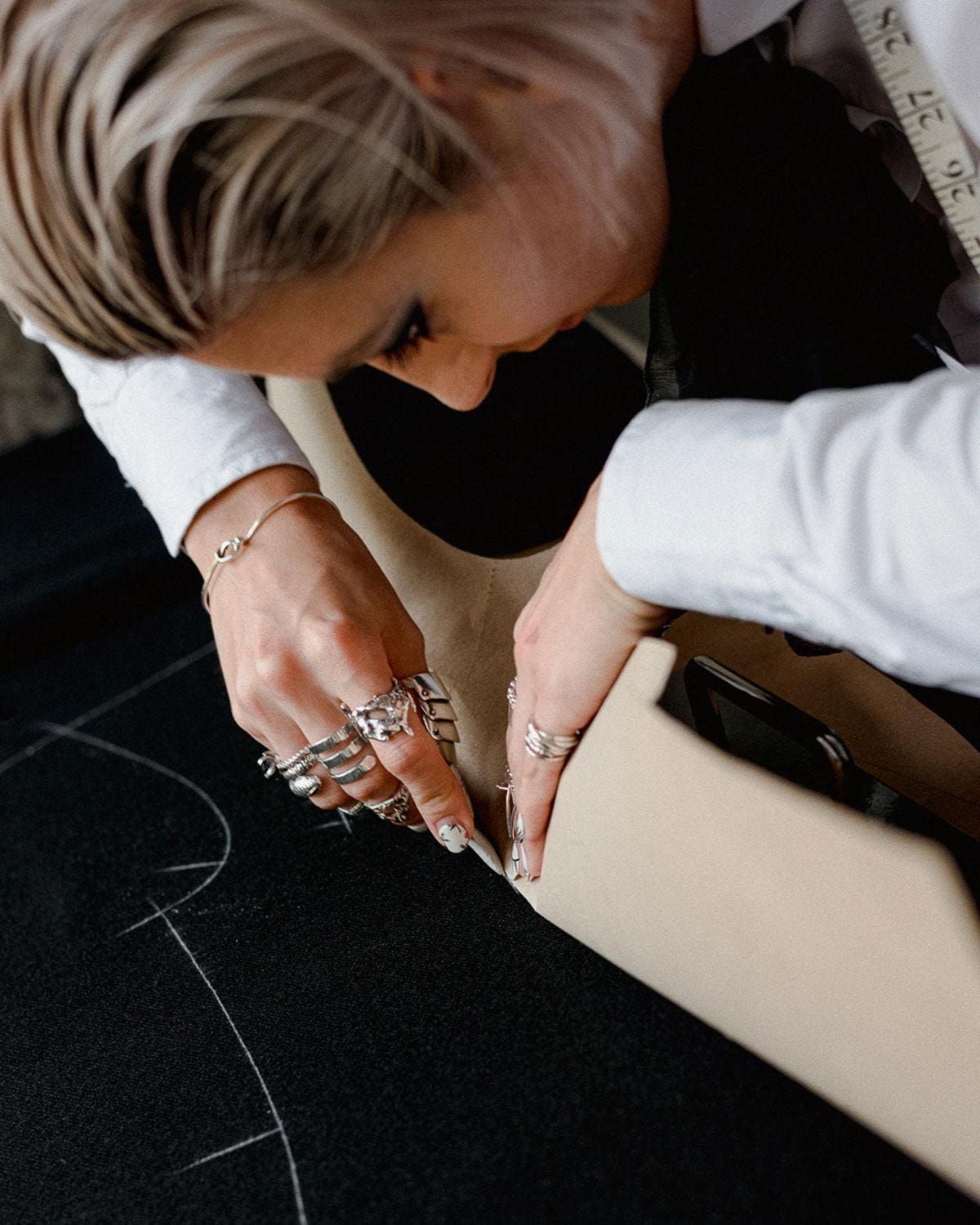 | 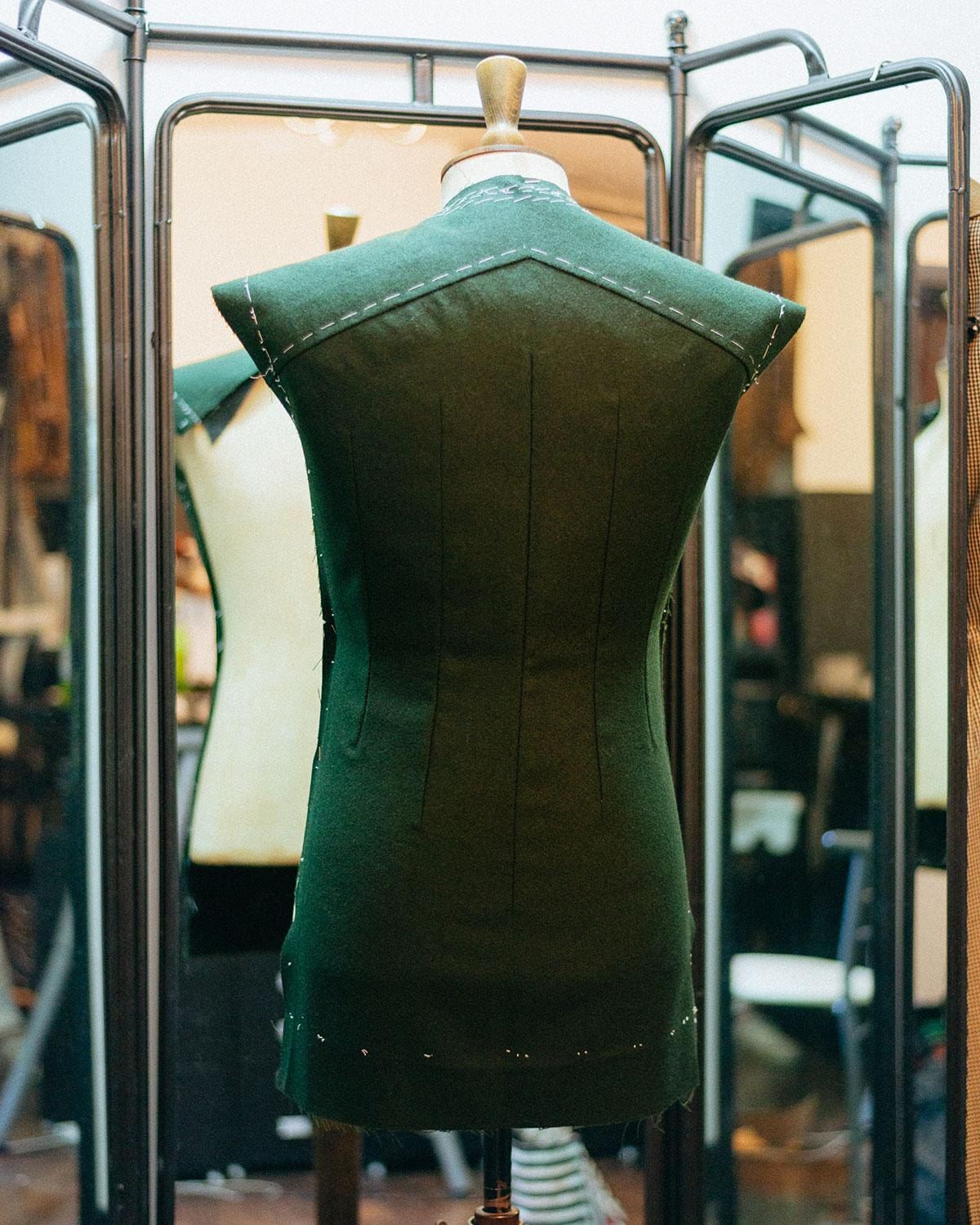 |
Do you offer women’s tailoring as well?
JD: Absolutely. That’s what we push first but get last; we’ve actually yet to have a female client. I don’t want to speak for women but I feel as though, because there’s been so little marketing for women on the Row, you’ve got two things happening. One, none of these shops look inviting and you’re not served by a woman very often. And secondly, there hasn’t been any money poured into building up cutters, across the houses, who are able to cut for women. It’s an art unto itself.
KL: You don’t want to invest £5,000 in a suit when you’re told, ‘Yeah we can do it but we don’t like to’. As a woman, you don’t want to look frumpy. I’m not saying everyone cuts that way but we’ve heard so many stories of tailors saying, “Well, we can cut for a woman but it’ll be a man’s suit”. Women want to be feminine. They want a sculpted waist, a big skirt, some cool trousers and they want to like feel powerful, but sexy at the same time.
JD: I know that among my group of male friends, there’s always this aspiration to come here and buy something from the Row. Among my female friends, I never hear that. Which is such a shame.
Why did you decide to set up on the Row, rather than somewhere with a broader mindset?
KL: We were very, very lucky. Last year the Pollen Estate had 13 empty shop fronts on Savile Row because the rents were so high and businesses couldn’t cope with the pandemic. They got in touch with us and offered us a space for free. It’s a residency so we’re not quite sure how long we’ll be here but, for us, it’s just great to have the prestige of being on Savile Row. To feel that we deserve to be here and we’re just as good a tailor as anyone else.
Are there any specific references or time periods that you work into your designs?
JD: The reference is primarily Adrian Greenberg, who has been, in my opinion, the sole instigator for all the tailoring you’ve seen since the ‘20s and ‘30s. You see his work referenced in Claude Montana’s work, in Azzedine Alaia’s work, in Thierry Mugler’s work, consistently throughout the ages. He’s a reference for everyone, and what we’re trying to do is exactly what all of these people have done, in a very, very small, humble way, and offer a contemporary interpretation of his tailoring.
Greenberg’s look was a sort of pointed inter-war era aesthetic, with strong shoulders, narrow silhouettes and an accentuated flair, that gave this bold youthful-looking tailoring at the time. It no longer looks so youthful because we now think of tailoring as being worn by elderly men but it would be nice to bring back to these garments those associations with youth and fun.
Is there a specific type of client looking for your style?
KL: We have quite a mixture. We have hedge fund guys and we have have a guy from Texas who’s really into crafts and goes around the world getting everything bespoke he can find – whether that’s shirts, ties, gloves, glasses, shoes, socks. Then we have some amazing young Chinese clients who are really entranced by British tailoring and want to get the strongest, biggest shouldered, most powerful suit that they can find. We also have a guy who just wants to wear flares which we think is great.
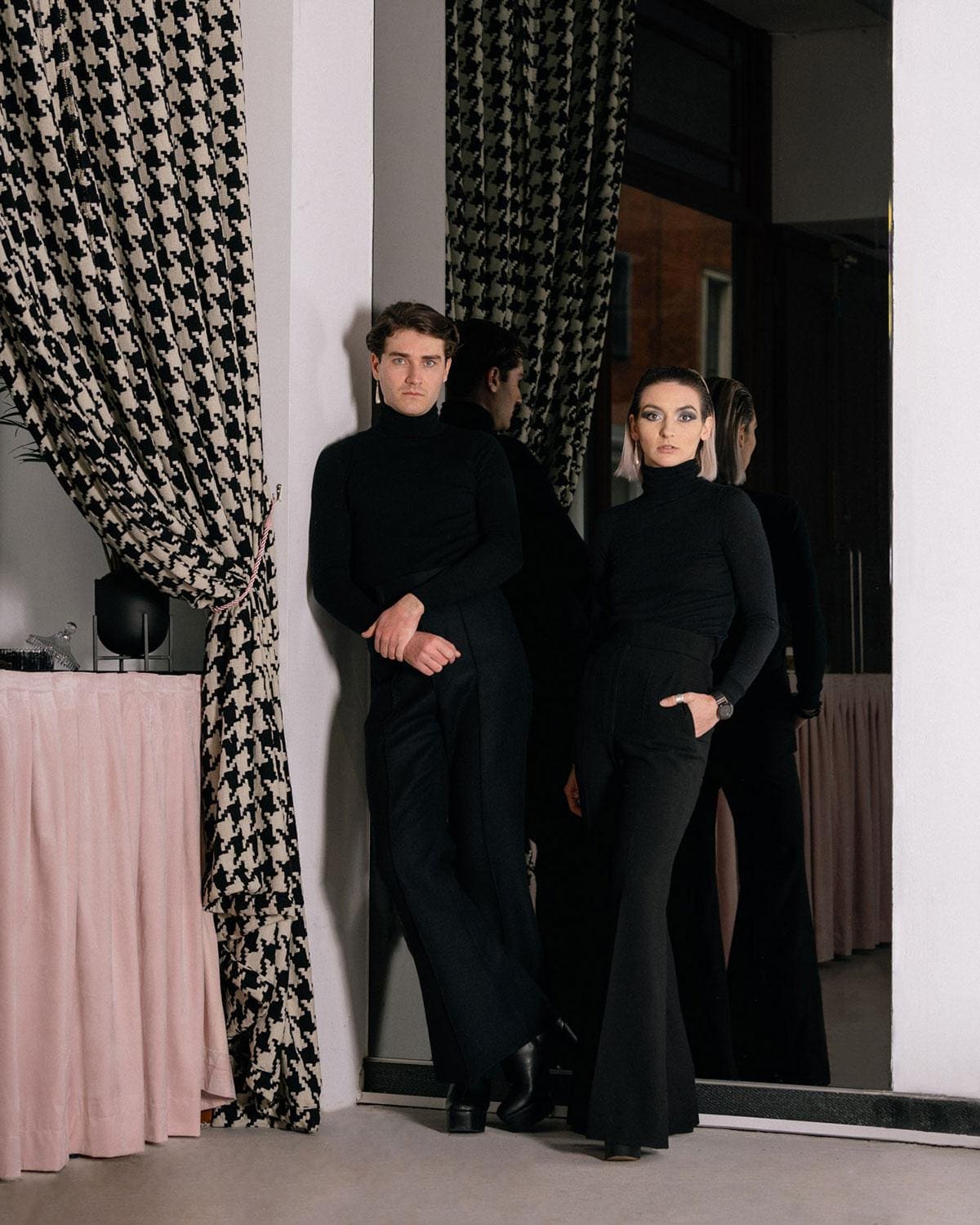
Have you found that the pandemic has changed how people think about tailoring?
KL: People have gone down two avenues. Some people have said, “I’m sick of wearing tracksuits and sweatpants. I want to be back out there and wearing all the clothes that I haven’t worn for a year.” They want the biggest lapels and the strongest trousers and want to strut and feel sexy again.
Some of our clients on the other hand have said, “Okay, I want to tone things down a bit. I’ve enjoyed this comfortable time, I want to still have the craft and still support you but maybe I could have some casual jackets or looser fitting trousers.” They’re still respecting the craft and still want our design aesthetic, but in a more casual way.
Will we see any ready-to-wear from Dobrik & Lawton?
KL: We’re launching a made-to-order offering in the autumn for people who aren’t able to get bespoke but still want something really cool and a little bit customised. So, like most, you pick your fabric, your waist and your silhouette and give us your seat measurement and inside leg. However, we’d like to make it really inclusive. Because of everything we’ve experienced, we don’t want it to have a gender. We’re going to explain to clients that usually, for example, girls trousers fasten, right over left and boys fasten left over right. But we don’t judge so anyone who’s trans, or has any other gender preference, can order and feel comfortable.
JD: So often what I hear when I go shopping with female friends is that nothing fits them because the sizing is so often idealistic that you’re struggling to find a pair trousers that fit or you struggle to find a top that fits your bust and also your waist. Offering something that is non-idealistic and caters for an actual body would allow people not to feel body shamed when they go shopping as well as allowing the trans community to shop and not have to be misgendered by the clothing they buy.
Tell us a little more about that.
JD: Savile Row isn’t the most welcoming place to trans people and what’s terrible is that they would really benefit from having clothes made for them. I’ve got friends who are trans and they’re constantly battling with me to alter their clothes; it could really be something that could help people. There’s a growing trend for genderless fashion and I don’t think it’s particularly conducive to have clothing labelled as male or female. Why should someone who is assigned male at birth and identifies as a man but wants to wear effeminate looking clothing have to shop in the women’s section? Having a gender nonspecific platform with an array of choice to fit all sizes eliminates those problems.
During the time we’ve been here we’ve also not had many clients from a BAME background. After all, if none of the people wearing these clothes look like you, it doesn’t make you want to buy them. I’m hoping the way we portray this MTO offering might make people feel more welcome to step into this Row and benefit from the clothing we make.
Read more: Introducing Tengri – Savile Row’s innovative yak fibre brand
